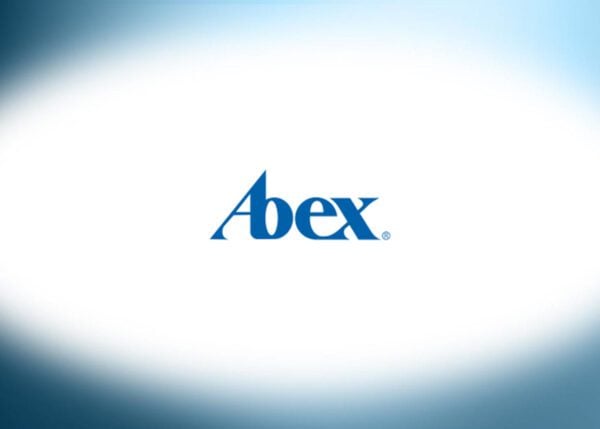01. History of Asbestos Use
Abex Corporation History of Asbestos Use
Abex Corporation began in 1902 when five manufacturers of railroad brake shoes merged to form American Brake Shoe & Foundry Co. (ABSF). As the company grew, it manufactured brake blocks, brake linings and other friction products that contained asbestos.
In the late 1920s, an ABSF subsidiary, American Brake Materials Corporation, introduced American Brakeblok® for vehicle manufacturing. Brakeblok quickly became popular with many companies and manufacturers, both domestically and internationally. Around this time, the company began to use asbestos in several of its friction products.
Government reports and court documents suggest ABSF and other asbestos companies started to recognize the dangers of asbestos by the 1960s. Court documents show ABSF and other companies funded research to determine the health effects of asbestos in 1936. The court documents allege the companies later altered reports and suppressed research findings connecting asbestos to mesothelioma and lung cancer.
Throughout this period, the company continued to grow and use asbestos in its products. In 1966, American Brake Shoe Company (formerly ABSF and Brakeblok) became Abex to reflect the company’s worldwide growth and increased product offerings. By 1981, Abex operated 62 plants around the world.
Reports show the company used asbestos in its friction products until 1987. As a result, Abex factory workers who helped create the products, auto mechanics, railroad workers and construction workers may have been exposed to asbestos.
Abex sold its friction product division to Wagner Electric Corporation, a subsidiary of Cooper Industries, Inc., in 1994. A few years later, Abex was acquired by Federal-Mogul Corporation.
In 2001, after many asbestos lawsuits, Federal-Mogul filed for Chapter 11 bankruptcy. This led to the creation of the Pneumo Abex Asbestos Claims Settlement Trust to handle asbestos-related claims.
Resources for Mesothelioma Patients
02. Asbestos Products
Abex Corporation Asbestos Products
The primary asbestos-containing products Abex produced were brake linings, brake shoes and brake locks, often known as friction materials. Asbestos was popular for use in the production of these products because of its strength, affordability and resistance to heat and chemicals.
Asbestos was also used by Abex subsidiary companies and parent companies in the railroad, aerospace and industrial sectors. Products like hydraulic systems, railroad car components and power fluid systems may have also contained asbestos.
Additionally, asbestos was used in the Abex facilities themselves. Workers may have been exposed to asbestos from insulation, boilers and furnaces.
Some asbestos products produced by Abex include:
- Abex 121 Super Brakes
- Abex Corporation Brake Linings
- American Brakeblok®
- Abex Brake Shoes
03. Occupational Exposure
Abex Corporation and Occupational Exposure
Abex put workers in many industries at risk of asbestos exposure. The company used asbestos in four of its foundries, primarily for the manufacture of brake linings and pads. Employees at these foundries may have been exposed to asbestos.
Workers such as aerospace and automotive mechanics may have experienced occupational exposure while installing or working on brake materials. Many did not wear respirators or other protective equipment because there were no warnings on Abex products. Families of workers may have also been at risk for secondhand exposure, when workers brought home asbestos fibers on their clothing.
At least by the 1960s, there is evidence Abex was aware of potential health risks associated with asbestos exposure, such as lung cancer and mesothelioma. Yet the company did nothing to inform or protect workers and consumers. Abex continued to use asbestos in its products until 1987. In 1990, the U.S. Environmental Protection Agency (EPA) declared the company’s foundry in Portsmouth, Virginia, and surrounding areas a Superfund site after discovering additional contamination from lead.
Many individuals risked exposure to asbestos as a result of Abex’s products and facilities.
04. Asbestos Litigation
Asbestos Litigation Against Abex Corporation
Starting in the 1990s, Abex began facing thousands of asbestos-related lawsuits after decades of using the mineral in its products.
For example, a parts man who worked with Abex brake linings during the service of heavy-duty vehicles filed a lawsuit. He routinely handled asbestos-containing brakes at an Oakland, California, shipping company from 1965 to 1999. Grinding, inspecting and replacing brakes and brake parts led to him regularly inhaling asbestos dust. The worker developed mesothelioma and died of the disease in 2011.
The jury found Abex liable. This resulted in a $11 million verdict for the victim’s family.
In another lawsuit brought against Abex, a jury ruled in favor of an asbestos-exposure victim. The victim worked as an auto mechanic in the 1970s, handling brakes and brake parts manufactured by Abex and Ford Motor Company.
In 2013, the auto mechanic developed peritoneal mesothelioma as a result of asbestos exposure. The jury found Abex liable for failing to warn the victim about the dangers of the asbestos-containing brakes. The victim was awarded nearly $37 million in damages.
Another victim developed pleural mesothelioma as a result of handling asbestos products made by Abex and other companies. Between 1950 and 1980, he was exposed to the mineral when adjusting Abex brakes. While adjusting the brakes, he would use compressed air to blow asbestos dust off the brake drums. He also ground and sanded new Abex brake shoes, resulting in exposure. The victim was awarded over $2 million in damages from Abex.
Abex faced many lawsuits like these, leading its successor company to file for bankruptcy.
05. Asbestos Trust Fund
Abex Corporation Asbestos Trust Fund
Many asbestos companies have filed for Chapter 11 bankruptcy after mounting asbestos lawsuits. In 2001, Federal-Mogul, who had acquired Abex, filed for bankruptcy after many such lawsuits.
Their parent company, Cooper Industries, took responsibility for paying asbestos-related settlements. This led to the creation of the Pneumo Abex Asbestos Claims Settlement Trust to handle asbestos-related claims. The trust was initially funded with $307.5 million to settle asbestos claims.
Asbestos bankruptcy trust funds like this help current and future victims receive compensation. Victims should talk to a mesothelioma lawyer to learn more about their eligibility and the process of filing a claim with this trust.




